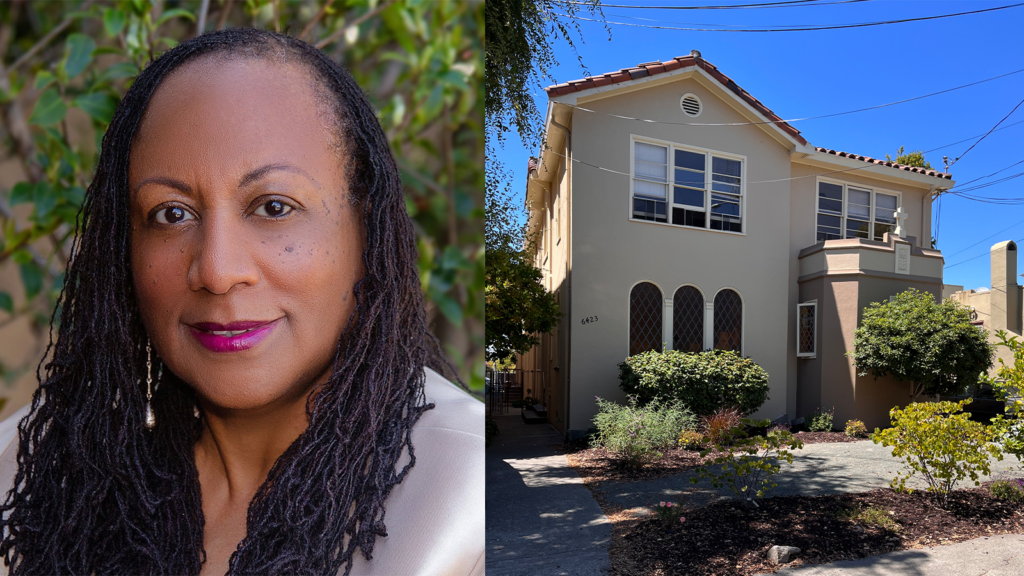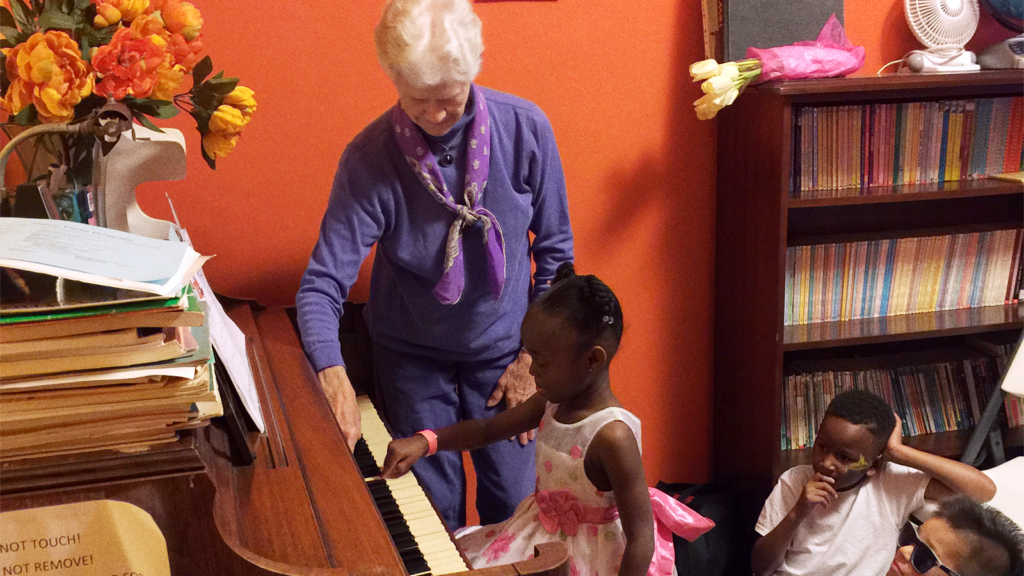Skyrocketing inflation, and the resulting increases in rent, has exacerbated homelessness in the United States. But nowhere is America’s homelessness crisis as prevalent as it is in California — as of 2022, 30% of all people in the United States experiencing homelessness reside in the Golden State. It’s also one of the states with the highest rates of homeless women, according to the National Alliance to End Homelessness.
Jackie Yancy, executive director of Oakland Elizabeth House in Oakland, California, is doing her part to make a small dent in the crisis. Oakland Elizabeth House is a transitional residence program for women and children who are facing homelessness, poverty and domestic violence — the last being a primary cause of homelessness for women and children throughout the United States.
Women experiencing domestic violence face a lose-lose dilemma: stay in violent relationships, or leave their homes with nowhere else to go. The confluence of domestic abuse and homelessness triggers a violent cycle of trauma and poor social outcomes. The pandemic has only exacerbated these issues. Stay-at-home orders resulted in reduced shelter availability and increased domestic violence rates.
Analyst News spoke to Yancy about her work with women and children escaping domestic violence — and how organizations like hers empower women to transition from being unsheltered to living an independent life. This interview has been edited for length and clarity.

How does domestic violence play a role in women experiencing homelessness?And how do you help the women you serve escape that trauma?
99.99% of the ladies we serve have experienced domestic violence. And it’s one of the main reasons why they’re homeless. It’s not the only reason they’re homeless; they [often] come up in traumatized homes and have experienced quite a bit of trauma. It’s all connected. So we’re helping the ladies become re-educated about how the system works. It begins with the self. Once you begin to work on their self-awareness about who they are, where they are, where their passion is, and where they belong, you can help them build in that area and move in the direction of self-sufficiency. But domestic violence is one of the main barriers that stops all of that.
How did you get involved with Oakland Elizabeth House?
I’ve always wanted to make a point to help women to empower themselves. It’s because of my own challenges as a young woman who grew up in a house of domestic violence, seeing my mother abused and thinking that’s what relationships are. Then getting married at a young age and getting into an abusive relationship as well and getting out of that marriage and deciding for myself that I’m not going to allow myself to be devalued by anyone. I have choices for myself, I can make things happen for myself, and I vowed to help other women understand that.
I try to help women erase doubt about themselves. I did get married again, and my husband and I both do work in domestic violence. He does work with the batterers and I work with the victims. Early in our marriage, we opened up our home to battered women and their children. I just believe that’s a mission for me in this life.
How does your organization serve and prepare women for independent living?
We begin by looking at who they are as a woman, what are their strengths, what area that intrigues them, and what they’re passionate about. That’s the area where we will direct them. We do encourage them to get a GED or diploma. And then once that’s completed, we move into building their foundation to be able to work on a job and how they can keep the job.
We focus on the core areas of education and financial management. We help them see what they can afford when they transition out. We talk about savings. We talk about cleaning up their credit. The minute they come into the program, we begin working on their credit right away.
We’re moving along with all the goals in these areas, and by the time they reach the [18 months a family can stay at Oakland Elizabeth House], the minimum savings that a mom has when they transition out is $10,000. One of our alumni residents that moved out a year ago is a homeowner now. Another is going to be transitioning out at the end of this year, and she’s looking to buy as well. So we work with them to transition out well and have a plan: a budget plan, a career plan, and a plan for their children, healthy parenting, and things like that. We try to cover all of those areas. We’re teaching them that, even when there are challenges, they’re able to meet those challenges in a way where they can manage it.
How has the program impacted children involved in situations of abuse and trauma?
We have a children’s program, and the children believe they are safe and feel safe. They have other kids to play with. It’s like one big family. When it’s time for the families to transition out, the kids are the ones that say they don’t want to go. And when they go to their own place, they’re lonely for their old friends. And so they’ll ask mom, “Can we go back to the house, at least Monday night for the children’s program?” It’s bittersweet, you know, for the family. That’s what we’ve found every time they transition out.

The “housing first” model, which connects homeless individuals to housing quickly and without prior requirements, is a popular policymaking approach around homelessness. Is this model effective? What are some of the issues underlying homelessness and domestic violence that policymakers don’t understand?
The model put into place by government organizations is “housing first.” That’s the foundation. When you’re “housing first,” you don’t care about the person being housed and it ends up being a revolving door issue, because you’re housing them, but they’re not going to stay there. They’re not going to stay there because, number one, they have a hard time following the rules. And they don’t want anyone telling them what to do. And then you have the mental health crisis and the addiction crisis as well. None of these foundational things that cause a lot of homelessness are being addressed. You need to work on some of these things to be able to stay housed.
For example, in domestic violence cases, the courts require a convicted defendant to take part in a batterer’s intervention program, in which they’re mandated 52 weeks of domestic violence counseling. Most of the participants learn about domestic violence, relationships, their own trauma, and all of that. So at the end of the year of the program, they’re a different person.
So if you don’t deal with the key or core issues that are keeping that person homeless, you’re going to keep having this revolving door. California has the highest homeless population in the nation. Why is that? What are the other states doing that we’re not doing? A lot of the other states mandate certain things with the population. I just think we are just tiptoeing around it and not really addressing the core issues of why a person is homeless.
If you live in the United States and you or someone you know is being abused and needs immediate assistance, call the National Domestic Violence Hotline at (800) 799-SAFE.

